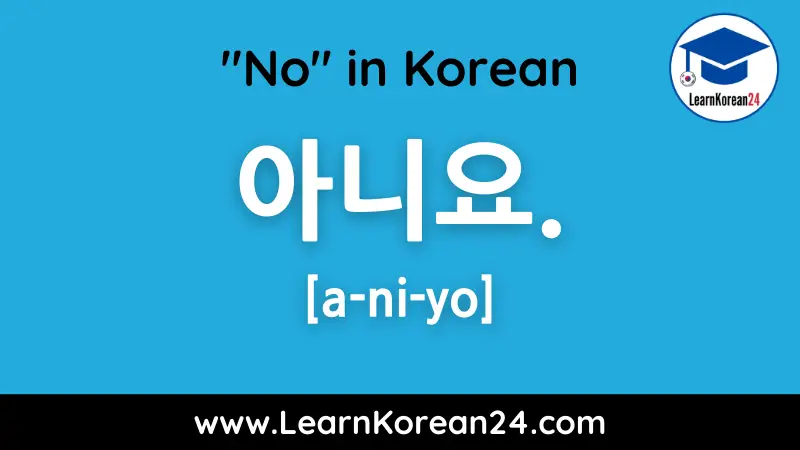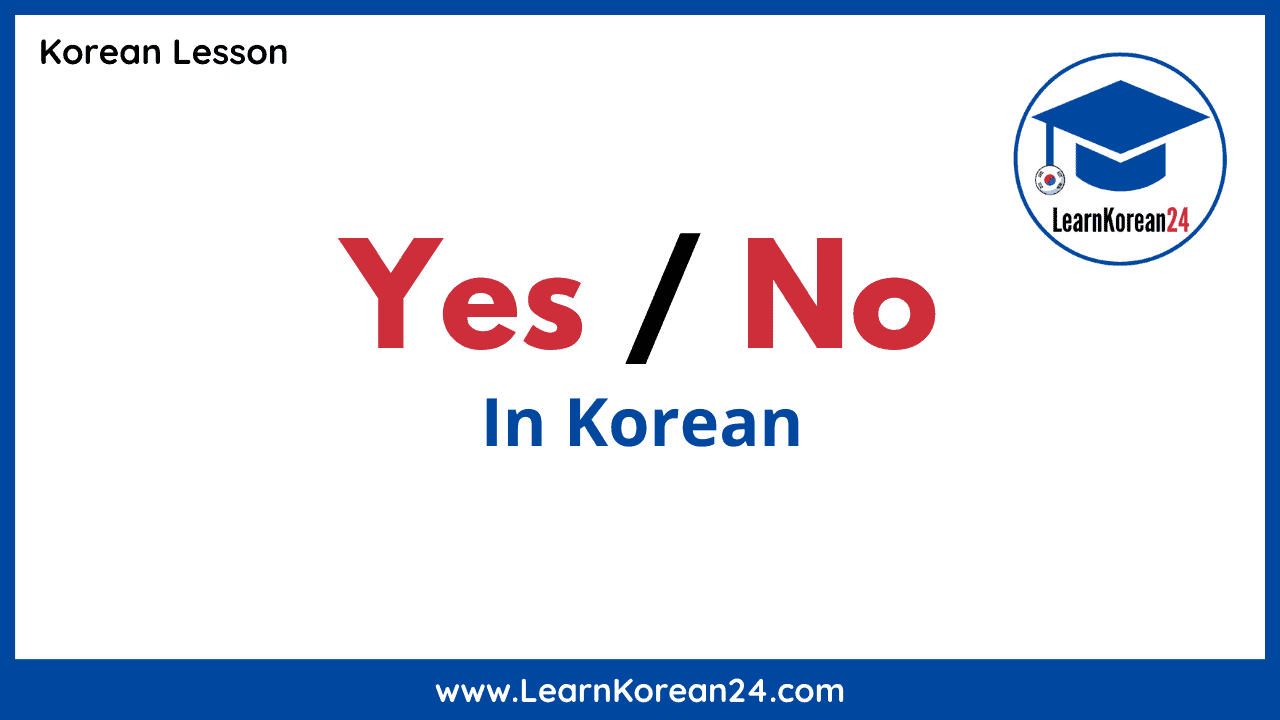How To Say Yes and No In Korean
In this lesson, you will learn how to say yes and no in Korean. These basic Korean words will help you to answer simple questions in Korean. The Korean words in this lesson are written in both Hangul and English. If you’ve not yet learned how to read the Korean alphabet, check out our complete Korean alphabet guide to help you learn how to read in Korean. So, how do you say yes and no in Korean?
Here are most common ways to say yes and no in Korean:
Yes In Korean
네 [ne]

The polite way to say yes in Korean is 네 [ne]. Listen to the audio above to hear how to say yes in Korean.
No In Korean
아니요 [a-ni-yo]

The polite way to say no in Korean is 아니요 [a-ni-yo]. This is made up of 아니 [a-ni] which means ‘no’, plus the polite ending 요 [yo]. Listen to the audio above to hear how to say no in Korean.
In Korean, there are different politeness levels. When speaking to close friends and people younger than you, you can use casual/informal language which is called 반말 [ban-mal]. When speaking to strangers and people older than you or ‘higher up’ socially, such as a teacher or your boss at work, then you should use polite language which is called 존댓말 [jon-daen-mal].
Both 네 [ne] and 아니요 [a-ni-yo] are both 존댓말 (polite language) and so you can use these words to say yes and no in Korean in any situation and you will sound polite.
Yes and No In Korean – Example Sentences
A: 김치 좋아해요? [kim-chi jo-a-hae-yo?] = Do you like kimchi?
B: 네. 좋아해요. [ne. jo-a-hae-yo] = Yes. I like it.
A: 김치 좋아해요? [kim-chi jo-a hae-yo?] -Do you like kimchi?
B: 아니요. 안 좋아해요. [a-ni-yo. an jo-a-hae-yo] – No. I don’t like it.
Yes And No With Negative Questions
An important thing to learn about using yes and no in Korean is that the way it is used with negative questions is different from how we use yes and no in English. In English if someone asks you a negative question such as “You don’t like kimchi?” and you answer “No.” it means that you do not like kimchi. However, in Korean, if someone asks the same question “김치 안 좋아해요?” and you answer no (아니요) it means that you do like kimchi.
This is because in Korean, yes (네) and no (아니요) express your agreement or disagreement with what someone is saying. So in the above example, when asked 김치 안 좋아해요? (You don’t like kimchi?) by answering 아니요 (no) it means ‘No, I disagree. I do like kimchi.’
Example Sentences
A: 밥 안 좋아해요? [bap an jo-a-hae-yo?] = You don’t like rice?
B: 네. 안 좋아해요. [ne. an jo-a-hae-yo.] = Yes. I don’t like rice. (In English – No. I don’t like rice.)
A: 밥 안 좋아해요? [bap an jo-a-hae-yo?] = You don’t like rice?
B: 아니요. 좋아해요. [a-ni-yo. an jo-a-hae-yo.] = No. I like rice. (In English – Yes. I like rice.)
More Ways To Say Yes and No In Korean
The most common ways to say yes and no in Korean are 네 [ne] and 아니요 [a-ni-yo] and these can be used in most Korean conversations. There are, however, other ways to say yes and no in Korean. Here are some more ways to say yes and no in Korean that you might hear:
- 예 [ye] = ‘Yes’ in formal language.
- 응 [eung] = ‘Yes’ in casual language (반말)
- 어 [eo] = ‘Yes’ in casual language (반말)
- 아니 [a-ni] = ‘No’ in casual language (반말)
Are you ready to get serious about learning Korean? Start our 100% FREE online Korean language course today!


